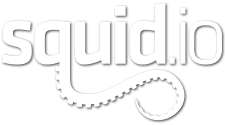1. Geometry
1.1 No isolated vertices
1.2 No coincident vertices
1.3 No coincident/coplanar faces
1.4 No inverted face normals
No backfacing or inverted face normals. All normals should be pointing out toward the correct direction for rendering without errors.
1.5 No empty objects
All objects must be geometry or splines. No empty objects that have names and nothing else permitted.
1.6 No coincident edges (Unwelded Seams)
Any two edges on an object that meet or overlap in the same position must be welded.
1.7 Sealed Geometry
Geometry must be “water tight” so that there are no openings where backfaces would be visible. This includes internal geometry visible behind transparent objects or materials.
2. Topology
2.1 Quads and Tris only
There can be no Ngons (polygons with more than 4 sides).
2.2 Mostly quads
The model must use quads as much as possible. A range of 10%-20% tris is sensible for most models, but some will call for a higher percentage to form sensible topology. Models are inspected manually to ensure a sensible quad/tri ratio is maintained.
2.3 Clean Edge flow
Must be as smooth and clean as possible for the shape of the model. Use efficient box or planar modeling techniques when you begin your model. Avoid booleans and subdivision modifiers while you are still modeling the full object. This will help eliminate undesirable geometry that does not meet the Hero standard. If booleans are used, the verts and edges created must be cleaned up and optimized to correct edge flow and avoid Ngons. This is a notorious result of using booleans.
2.3.1 No poles with more than 6 edges on the model
2.3.2 Subdividable Gometry
Model is cleanly subdividable for production applications. Base mesh must still retain shape and detail for real time application without significant visible faceting.
2.3.3 Holding/Support Edges
Holding/support edges present to support subdivision in production application. This also applies to to 3D text.
2.3.4 Small Object Exception
Exception for small, insignificant objects within the scene. Objects such as screws, bolts, rivets, wires, and other objects which are very small in comparison to the overall model size, does not have to meet all the Clean Edge Flow requirements for subdivision
2.4 No Use of smoothing groups or crease values to create hard edges
Smoothing groups and crease values can not be used to force hard edges where there is no holding geometry. Smoothing groups must only be used for accurate surface rendering or object will appear faceted.
2.5 Optimized Geometry
No excess geometry beyond what is required for the intended shape and detail. Lower polygon count saves heavily on processing, rendering, and edit-ability.
3. Real-World Scale
3.1 Real-world scale within 1%
Model must be in centimeter units at real-world scale. If the model does not have an exact real-world counterpart (such as a human character or an unbranded car), the model must use the size/scale of comparable objects in real life.
3.2 Exception for exceedingly large/small models
Models of objects that have a real-world scale that require magnification or distance to see, such as amoebas and solar systems, are excepted from having real-world scale.
4. Position and Orientation
4.1 Center Origin
The model should be centered over the origin in X and Y axes, and the lowest Z point of the object sitting on the ground plane.
4.2 Orthographic Orientation
The model should be oriented to the orthographic positions as it would be considered in the real world. In other words, the model can’t be lying on its side, upside-down, backwards, or turned sideways when the file is opened.
5. Transforms
5.1 Model transforms, such as rotation and scale, must be reset or frozen
Transforms must be reset so object reads at 100% scale size, rotation, and position.
6. Naming and Organization
6.1 Descriptive and unique object names
Default object names are not acceptable. They should be changed to be descriptive of the object.
6.2 Model includes a grouping or hierarchy for moving all objects in model together.
6.3 All geometry is contained in a single layer structure with the same name as the model.
Each of the production applications has a layer organization system.
- 3ds Max – Layers
- Maya – Display Layers
- CINEMA 4D – Layers
- Lightwave – Include the .LWS with the model and organize using a null object
See Scene Organization and Best Practices for more information and example.
7. UVs
7.1 No obvious texture stretching on model
7.2 UV Seams hidden or are not visible
7.3 All UVs in 0-1 UV space
8. Materials and Textures
8.1 All objects must have a material applied
8.2 Texture Maps are a standard power of two square resolution (512×512,1024×1024,2048×2048, 4096×4096, etc.)
Texture maps size should be determined by amount of detail needed. If using a texture map for a solid color swatch it does not need to be full resolution. Being conscious of the texture size helps optimize render times and file transfers for submission. If a smaller resolution can be used with no noticeable difference on the render, do so. Try to keep map usage and size as efficient as possible. (Ex. 512×512,1024×1024, 2048×2048, 4096×4096, etc.)
8.3 All texture maps must be saved as lossless or uncompressed formats such as PNG, TIFF, and TGA.
8.4 No mapped texture paths
Any texture paths must be stripped from model and be relative for submission.
